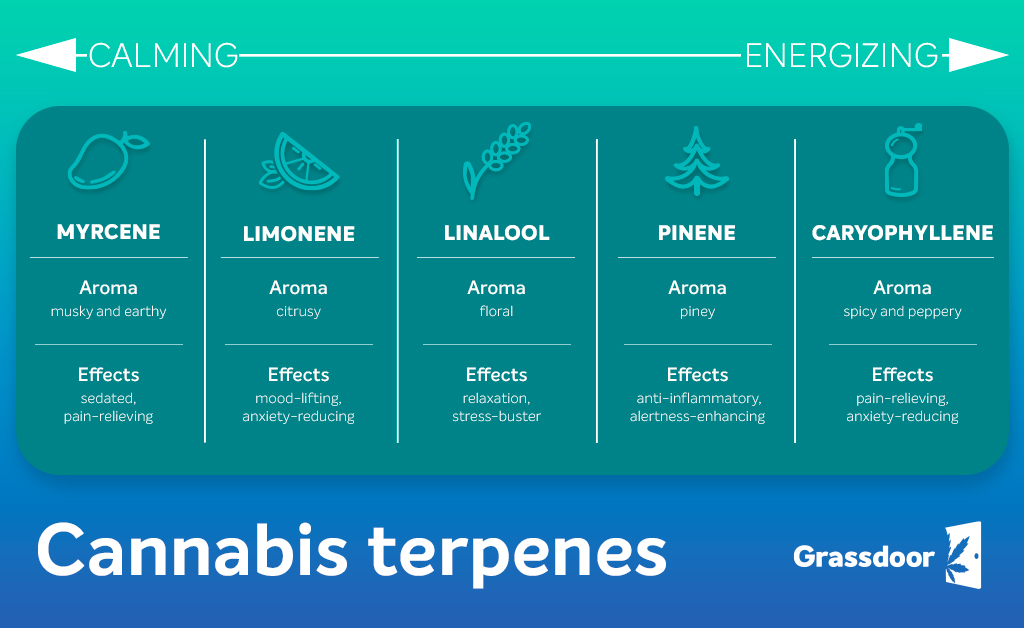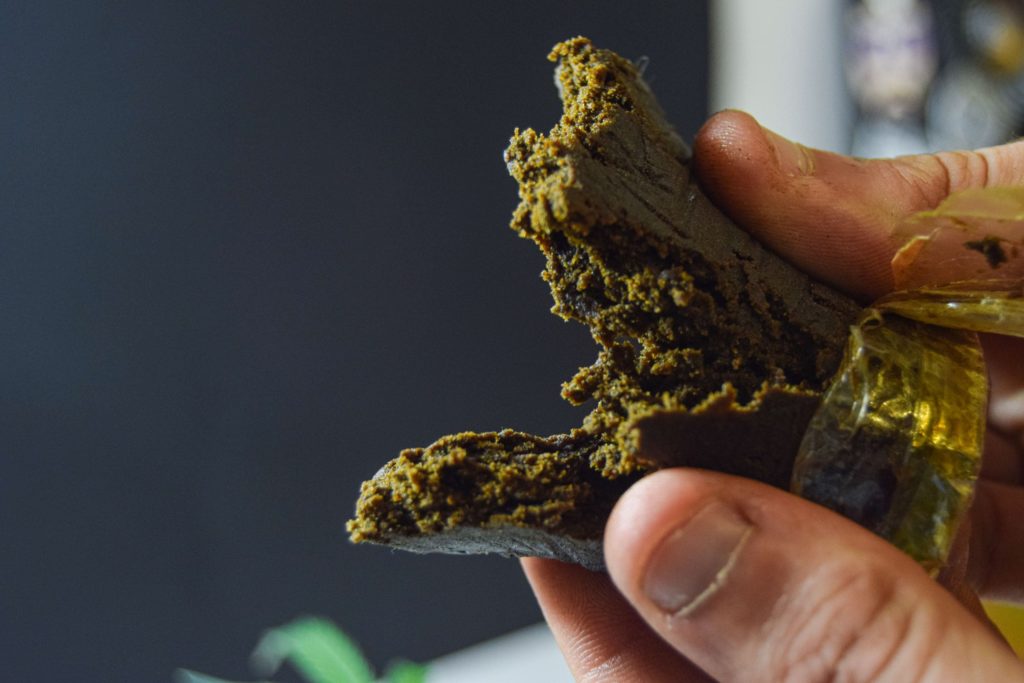Ready to learn about the dynamic duo of the cannabis plant? We’re referring to none other than terpenes and cannabinoids! Terpenes are the aroma and flavor makers that make each strain stand out.
In contrast, cannabinoids offer body-altering effects and make you feel relaxed. Cannabinoids and terpenes play powerhouse roles in elevating and shaping the experience of cannabis enthusiasts. Let’s shed light on what are cannabinoids and terpenes before talking about their unique profiles.
What Are Terpenes?
Terpenes are a type of hydrocarbon produced by many plants, including cannabis plants, which contain over 100 terpenes. The most common ones that we can think of are myrcene, limonene, linalool, pinene, and caryophyllene.

Terpenes in weed are like the spices we use for cooking. Fragrant oils and aromatic notes give each strain a distinct personality. Different strains can have different blends of terpenes, each offering a profoundly satisfying terpenes aromatherapy experience, ranging from fruity and sweet to earthy and musky.
And the best part, these terpenes can influence the effects you experience, whether you’re looking to relax, get energized, or just enjoy a tasty treat. So, go ahead and sample different strains, dive into an adventurous terpenes journey, discover your favorite terpene profiles, and enjoy the ride!
How Do Terpenes Work?
You must have wondered why some strains of cannabis smell like zesty lemons while others smell like earthy pine. The answer lies in the weed terpenes. Terpenes interact with the body’s receptors and neurotransmitters to produce various effects. They tend to interact with the central nervous system, the immune system, and the cardiovascular system.
So, let’s say you’re feeling anxious and need to relax. You might reach for a strain high in the linalool terpene, which promotes relaxing and mood-boosting effects. Or, if you’re in pain and need some relief, you might reach for a strain high in the myrcene terpene. As you can tell, terpenes can have a significant influence in tandem with the cannabinoids present in a cannabis strain, edible, or concentrate.
How Do Cannabinoids Work?
Cannabinoids interact with the body’s endocannabinoid system for the effects to start showing. The endocannabinoid system is a network of receptors and neurotransmitters that regulates various functions, including mood, appetite, pain, and immune response. When cannabinoids such as THC or CBD bind to the receptors in this system, they can produce various effects, including altered perception and much more.
The specific effects of cannabinoids on the brain can depend on the type of cannabinoid, the dose, and the individual. For example, THC is the primary psychoactive compound in cannabis and is responsible for its intoxicating effects, while CBD has potential therapeutic benefits without producing intoxication. Thus, cannabinoids’ effects can vary from person to person and their type.
Terpenes and Cannabinoids: How Are They Different?

Think of terpenes and cannabinoids as the yin and yang of the cannabis plant. They both play important roles, but they differ in what they do. There are several medical uses of cannabinoids, such as effects on our bodies, like changing our mood, making us hungry, or feeling relaxed.
Terpenes, as already discovered, are responsible for the distinct aroma and flavor. They work in tandem with cannabinoids to create what is known as the “entourage effect,” where the combination of compounds can enhance or modify the effects of the individual compounds. They’re also like the hype man and help improve the effects of the other compounds in the plant. Let’s throw more light on terpenes and cannabinoids.
| Feature | Terpenes | Cannabinoids |
Role in cannabis | Fragrance and flavor. Modulates cannabinoids’ effects | Psychoactive and therapeutic effects |
| Function in the body | Modify the effects of other compounds | Interact with the endocannabinoid system to produce therapeutic effects |
Interaction with endocannabinoid system | Modulate activity of receptors | Bind directly to receptors |
Subsequent high | No | Yes (primarily with THC) |
| Examples | Myrcene (herbal), ocimene (minty), limonene (citrus), linalool (flowery), caryophyllene (peppery, and pinene (pine) to name a few | THC, CBD, CBN, CBG, and THCA to name a few. |
To sum it up, terpenes and cannabinoids work together to create the unique effects of each strain, creating a wholesome experience for canna folks.
A Final Look at Terpenes and Cannabinoids

Terpenes and cannabinoids both offer a variety of potential benefits for health and wellness. Its benefits include therapeutic uses, such as alleviating anxiety, reducing inflammation, and managing pain.
Also, some terpenes can have sedative effects, which can help you fall asleep faster and stay asleep longer. So, the next time you’re having trouble sleeping, consider reaching for a strain with high levels of relaxing terpenes, like linalool.
Whereas when talking about cannabinoids, THC’s ability to alter perception and produce feelings of euphoria are well-known. At the same time, studies show that CBD can help reduce anxiety and depression, improve sleep, manage pain, reduce inflammation, and possibly even reduce the frequency of seizures in people with epilepsy. To understand more about the cannabis plant’s super compounds, you can read more about that in types of cannabinoids
So, whether you’re looking to enhance your overall well-being or just enjoy a tasty and fragrant strain, budder, or distillate, terpenes, and edible cannabinoids are worth checking out. And, as always, steer clear of synthetic cannabinoids in a world where everything exists naturally. That’s why at Grassdoor, we pride ourselves on sourcing only the best cannabis products in the market. Head over to our blog to dive into the world of cannabis to help make your shopping experience memorable.

